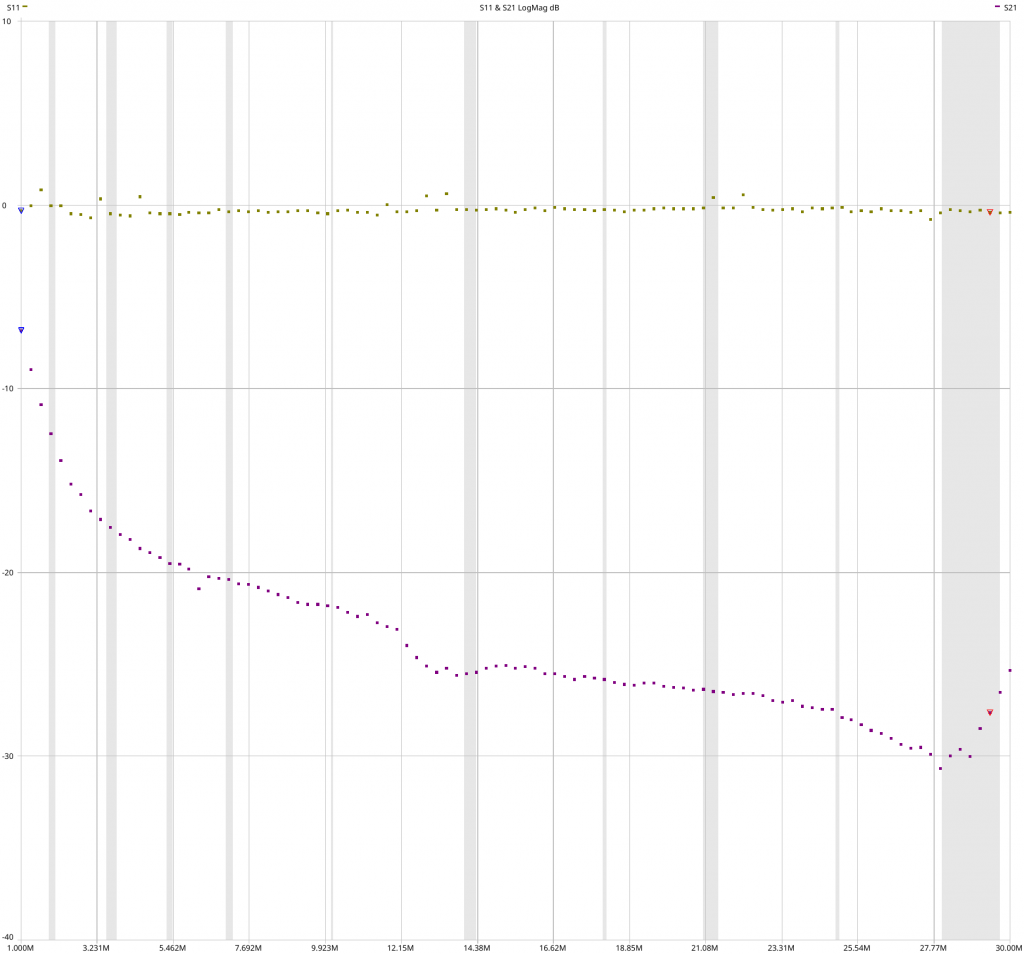To get over the wiggly test setups for my homebrew common chokes I decided to create something more stable which I can use in combination with my nanoVNA to get quick results.
The parts list
To build this a few parts were needed.
- 2 crocodile clamps
- 2 pieces of wire (to connect the crocodiles to the board)
- 1 large piece of copper plate / pcb
- 3 copper pcb pads
- 2 resistors a 100 ohm
- 2 sma sockets
- a view centimeters of enameled copper wire
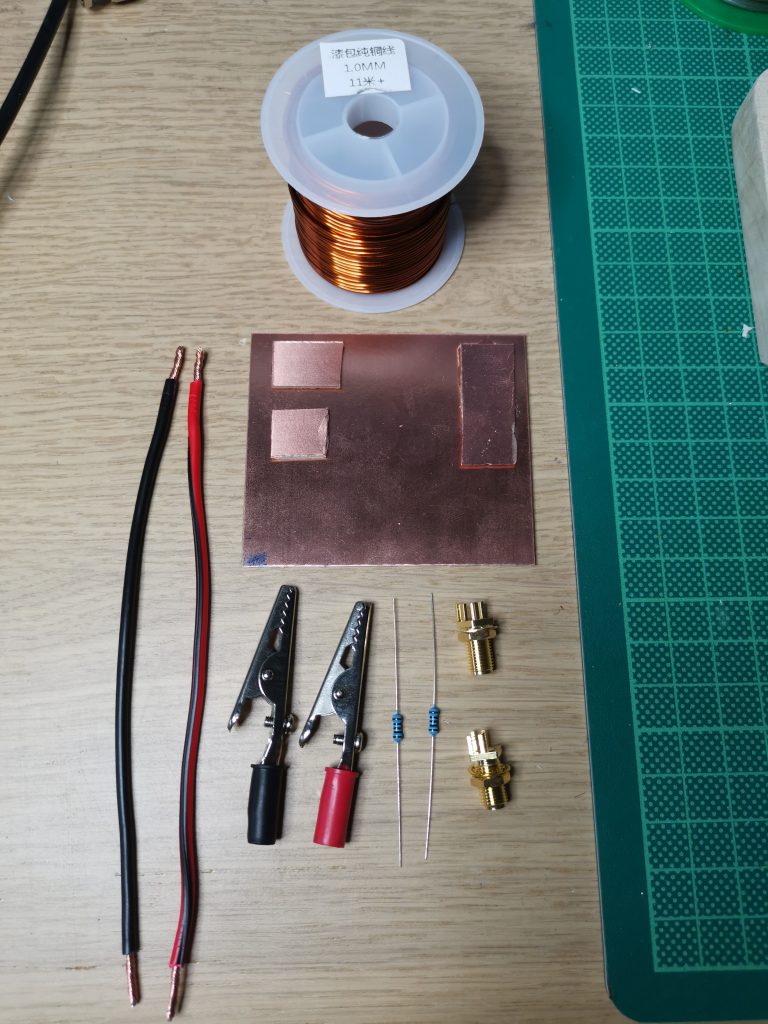
Creating the board
Next after I removed the enamel at the end of the copper wires I soldered the core of the sockets to the wires. And mounted the sockets with their ground connectors to the copper plate. The free ends of the wires were soldered to the corresponding pads
To get the proper impedance the two resistors were soldered in parallel between the S1 connector ‘core pad’ and the wire mounting pad.
After soldering on crocodile to each of the wires I mounted them on the respective wire pads.
That’s all – nothing fancy but will ease my future choke tests.
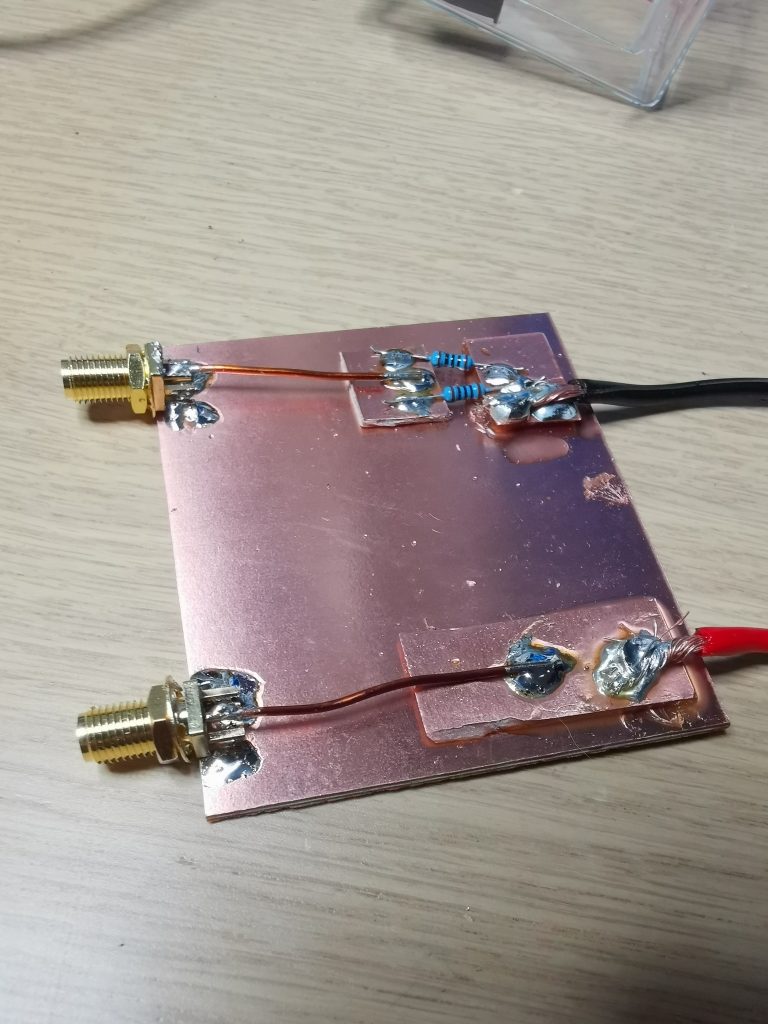

Calibration of the nanoVNA
To get more exact results the nanoVNA was calibrated in following steps.
- the two crocodiles were clamped together (without a choke in between)
- Port S1 of nanoVNA was connected to the socket close to the resistors
- Calibration steps for Load, Open, Short were performed by placing the corresponding ends to the other SMA socket.
- Through test was performed by connecting the second socket to S2 of the nanoVNA
The Test Setup
Now it’s time for the Attenuation test itself. The core is clamped between the two crocodiles.
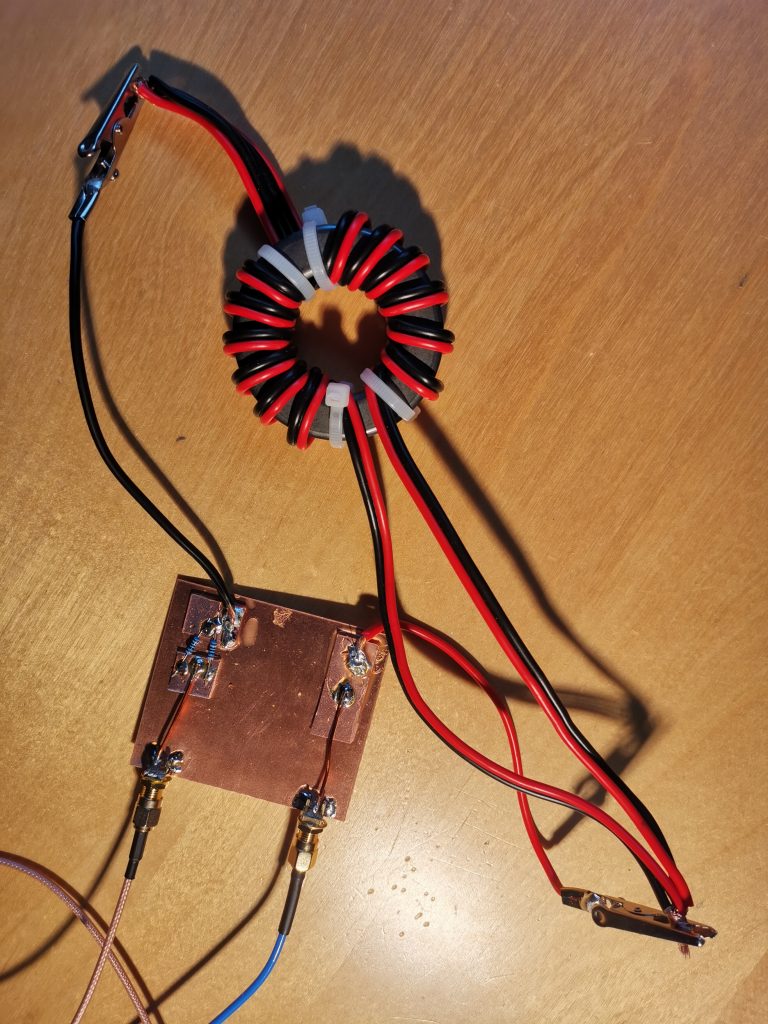
The testing board can be connected also with two clicks on a boxed choke via the connectors.
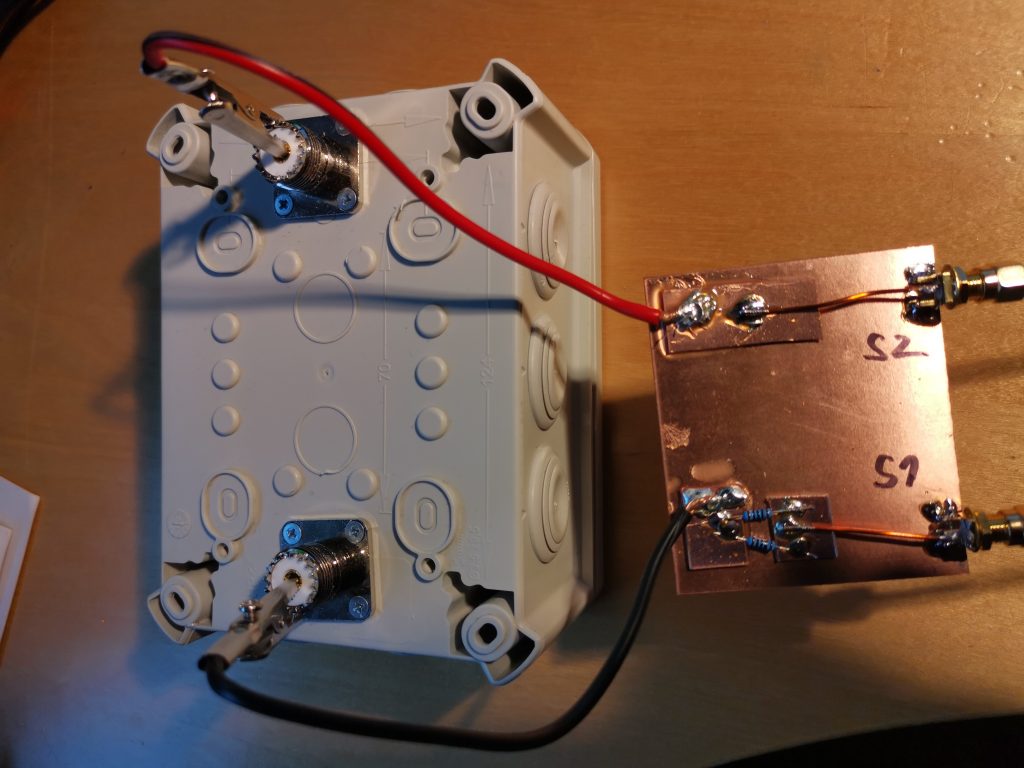
The Measurement
Setting a frequency range from 1 MHz to 30 MHz and selecting S21 Logmag the attenuation curve shows up.
As it can be seen there is room for improvement. The choke should have a attenuation of at least 20dB. This is not the case for frequencies below the 20 meter band. For higher frequencies it’s ok but not at the edge of the art 🙂
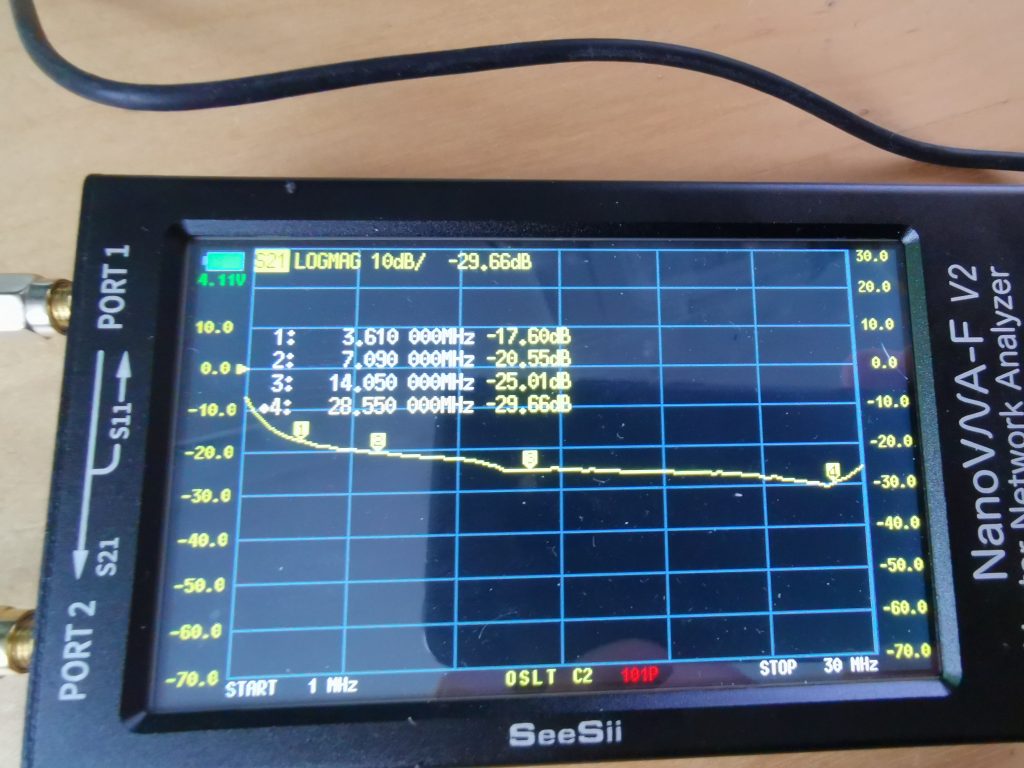
Below you can see the data imported into nanoVNA saver. This application is pretty useful for a first analysis and to save the data for further processing
